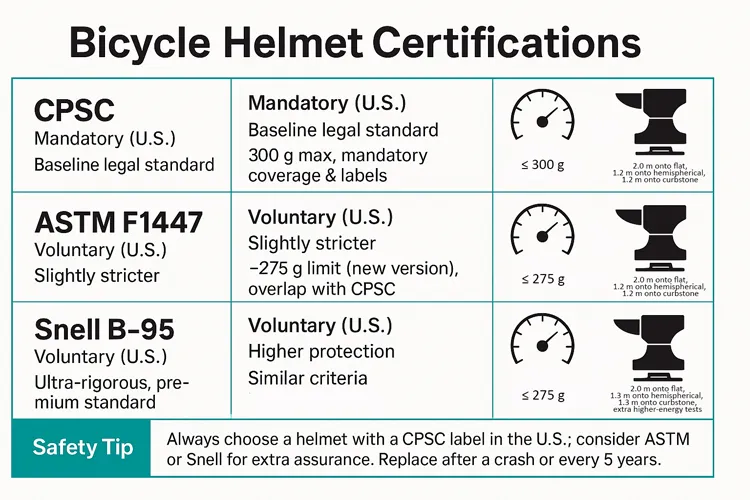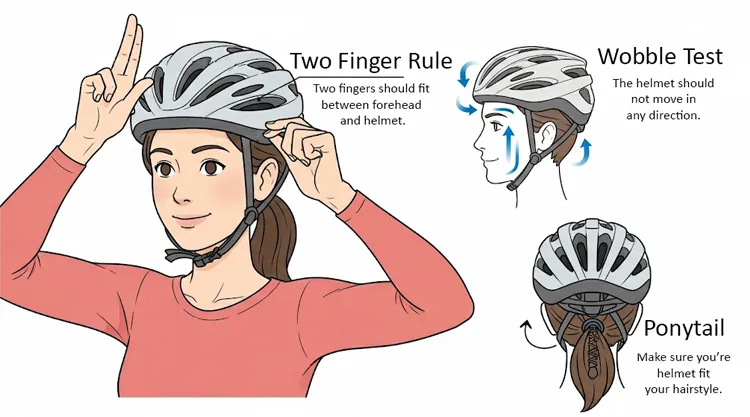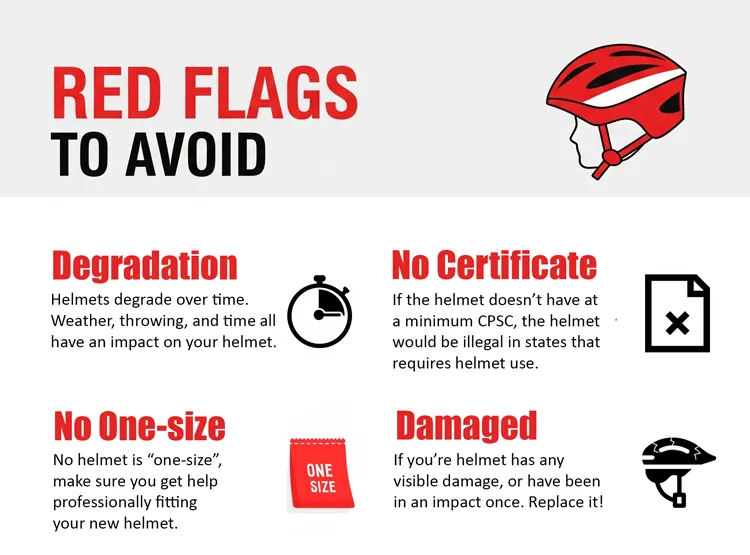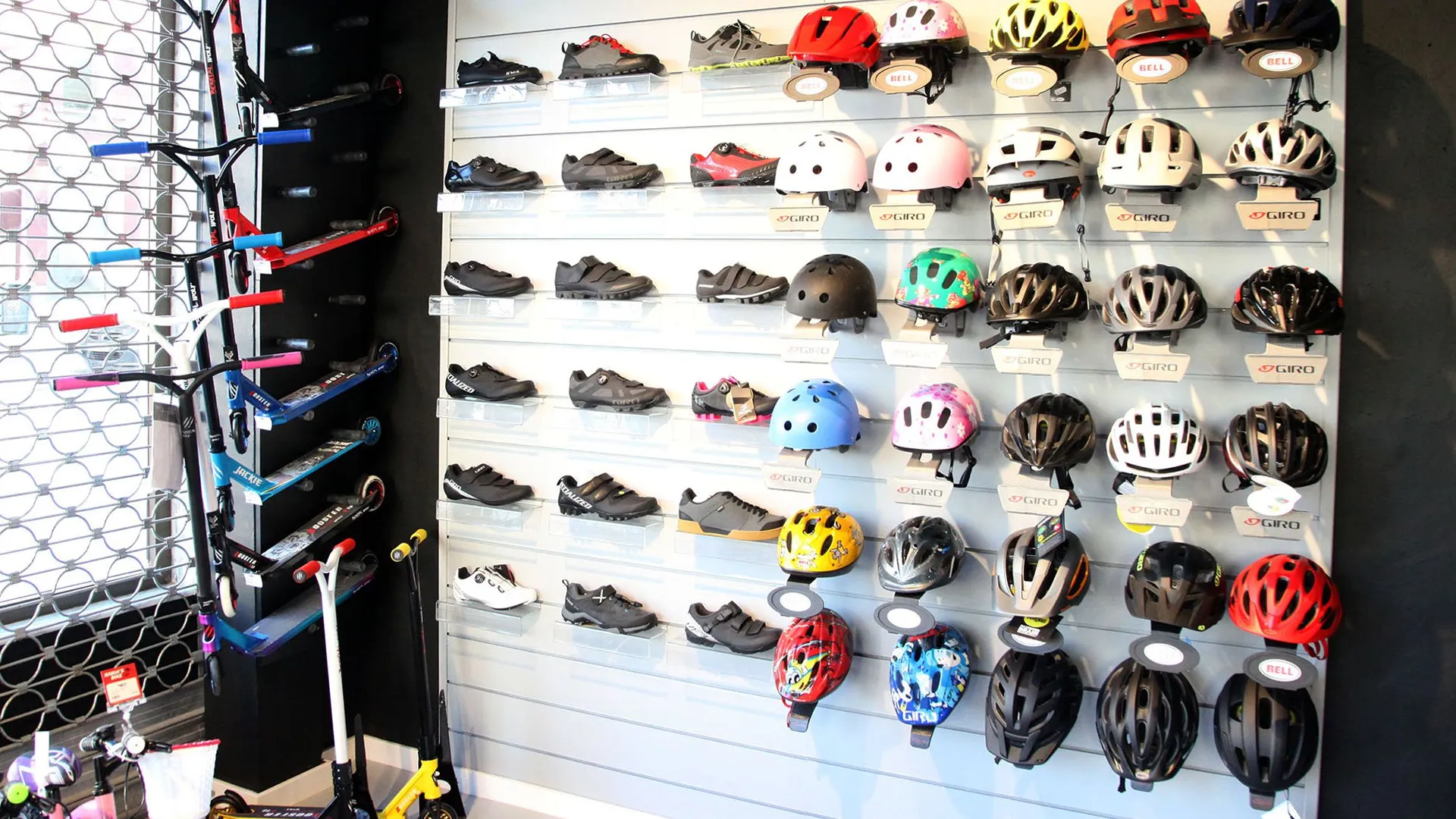No matter how much you spend on your helmet, it’s gonna be far less than what your head is worth. After a couple decades of crashing while doing everything from skateboarding, snowboarding, to biking, and more, I’ve learnt that a helmet is more than just an accessory. It’s a key reason why most of my crashes resulted in coming home with a cool story instead of getting an express ticket to the emergency unit. Like I said, most times… Sadly not every time, I do have 50% ceramic front teeth.
But here’s the kicker: the helmet aisle is a mess of marketing speak, confusing certifications, and price tags that often make no sense. I’ve been through a wide variety of helmets over the years, from specials that tipped back and forth to others that felt like you wore a tight fitting beanie.
Here’s Tobias’ tips on what you should think about when helmet shopping.
The Safety Standards That Actually Mean Something

Every helmet has stickers. Most are at best meaningless, others are just plain confusing. Here are the ones that count:
CPSC (Consumer Product Safety Commission)
This is the bare minimum in the U.S. If it doesn’t have this, don’t even look at it. It means the helmet passed basic impact tests, but that’s like saying a car has brakes. It’s just the starting point.
MIPS (Multi-directional Impact Protection System)
This is the big one. MIPS helmets have a yellow liner that rotates slightly during angled impacts, reducing rotational forces on your brain. I’ve crashed in both MIPS and non-MIPS helmets, and while I wasn’t really in a state to say I now have proof of the difference scientifically, I do sleep better knowing that yellow liner is there.
Virginia Tech Ratings
These folks crash-test helmets for a living. They rate helmets on a 5-star scale based on real-world crash testing data. A 4 or 5-star rating here means more than any other marketing claim combined.
Snell B-95
A tougher test than CPSC, but honestly, most recreational riders don’t need this level of protection. It’s overkill unless you’re bombing down hills at 40+ mph.
How to Actually Fit a Helmet And Why Most People Get It Wrong

I see riders every day with helmets that slide around like a loose cowboy hat. You think a cowboy bumping on a horse at full speed would accept a loose fitting cowboy hat, I’d say never.
Here’s what you need to do to get it right:
- The Two-Finger Rule – Put the helmet on. The front edge should sit about two fingers above your eyebrows. Any higher and it’s not protecting your forehead. Any lower and you look like you’re wearing a bowl. If you got fat fingers you can probably get away with a bit less.
- The Wobble Test – Buckle it up, then shake your head side to side. The helmet should move with your head, not slide around on top of it. If it wobbles, tighten the dial or try a different size.
- The Ponytail Problem – Ladies, this one’s for you. A problem I didn’t realize until I got my little princess. Most helmets assume you don’t have hair. Look for models with ponytail ports or adjustable cradles that work with your actual hairstyle.
- Pressure Points – A good helmet should feel snug everywhere, not tight in spots. If you feel pressure points after 10 minutes in the store, it’s going to be torture on a long bike ride.
Couple Important Features You Don’t Wanna Miss
- Ventilation Is Awesome – I used to think vents were just for show until I started riding in serious heat. More vents generally means better airflow, but the placement matters more than the count. Look for vents that line up front to back, that’s where it’ll have the best impact.
- Retention Systems Aren’t All Equal – Cheap helmets use basic straps. Better ones have dial systems that let you fine-tune the fit. The best ones have vertical adjustment too, so you can dial in exactly where the helmet sits on your head.
- Weight Is Overrated – Unless you’re racing, don’t obsess over grams. I’d rather have a helmet that’s 50 grams heavier but fits perfectly than a featherweight one that slides around the top of my head.
- Color and Visibility – Bright colors and reflective bits help drivers see you. I ride mostly in gray and black gear, but I try to get some colors/reflectives on my helmet. It’s the one piece of gear that needs to be seen and it’s the highest point of you when you’re biking making it the most visible to others.
Red Flags to Avoid

Helmets Degradation or Age
The foam degrades over time, even if you’ve never crashed. Weather has its effects on it too. To replace your helmet every 5 year is a great idea.
Anything Without Proper Certification
I don’t care how cool it looks or how much money you’re saving. You don’t gamble with your most valuable asset!
Good thing to remember is that many states have regulations regarding the minimum acceptable certification for helmets used by their citizens if you’re legally obligated to use a helmet.
You can easily find the helmet regulation in your state, start by checking our state-by-state helmet regulation hub.
There are no one-size-fits-all
Heads come in different shapes. A helmet that claims to fit everyone, will fit no one well. Sizes are a thing for a reason.
Damaged Helmets
Obvious, but worth saying. It is especially important for parents to inspect their kids’ helmets every once in a while. My kids throw those things around like they’re boomerangs. Even minor cracks mean it’s done for. It’s the best insurance you can have so don’t risk it.
This is also one of the reasons why we don’t recommend you inherit an older siblings gear, or buy used helmets.
Budget Tips – A Good Helmet Don’t Cost A Fortune
You can get a solid, MIPS-equipped helmet for $60-80. You don’t need to spend $200 unless you’re after specific features like extra ventilation or lighter weight. I’ve crashed in both price ranges, and the cheap ones protected my skull just fine.
The sweet spot is usually $70-120. That gets you MIPS, decent ventilation, and a good retention system that works well. Anything above $150 is mostly about comfort and weight savings, for those high-end users.
A Few Great Helmet Brands (Non-Conclusive)
Giro – Their fit system is solid, and they offer good value across all price points. The Syntax is my go-to recommendation for most casual riders.
Specialized – Great if you have a rounder head shape. Their MIPS integration is seamless.
Bell – Been making helmets forever and know their stuff. The Stratus is a proven performer that doesn’t break the bank.
POC – If you’ve got extra cash laying around and want maximum protection, these are premium built. They are on the heavier side, but they can take an impact like a tank.
To help readers find the perfect helmet we’ve talked to tons of expert riders and done some serious research and testing to create an in-depth bicycle helmet buyers guide.
When to Replace Your Helmet
After Any Crash – Even if it looks fine, the foam might be compromised. Don’t risk it.
Every 3-5 Years – Foam degrades, straps wear out, and safety standards improve. Depends on weather/usage.
When It Doesn’t Fit Anymore – Hair changes, heads change over time. If it’s not snug anymore, it’s time to hit the shop.
When the Straps Are Fraying – A helmet is only as good as what keeps it stuck on your head.
Tobias’ Finishing Words of Helmet Wisdom
A helmet is the one piece of gear you use but hope never to test. But if you ever happened to accidentally test it, you want to know that it’ll do its job.
Don’t overthink it, get something with MIPS, make sure it fits properly, and replace it when it’s worn out. Good to remember that some states will let insurance companies use non-helmet usage against you in a claim.
I’ve been riding for years, and I still check my helmet fit every now and then. Doesn’t mean I am paranoid… I think. I just think it’s the smart thing to do.
Let me leave you with a quote I use for my kids: How stupid must you be if you think your brain’s not worth protecting?
Go out and ride safely knowing if an accident occurs you’ve done your best to protect yourself.

Leave a Reply